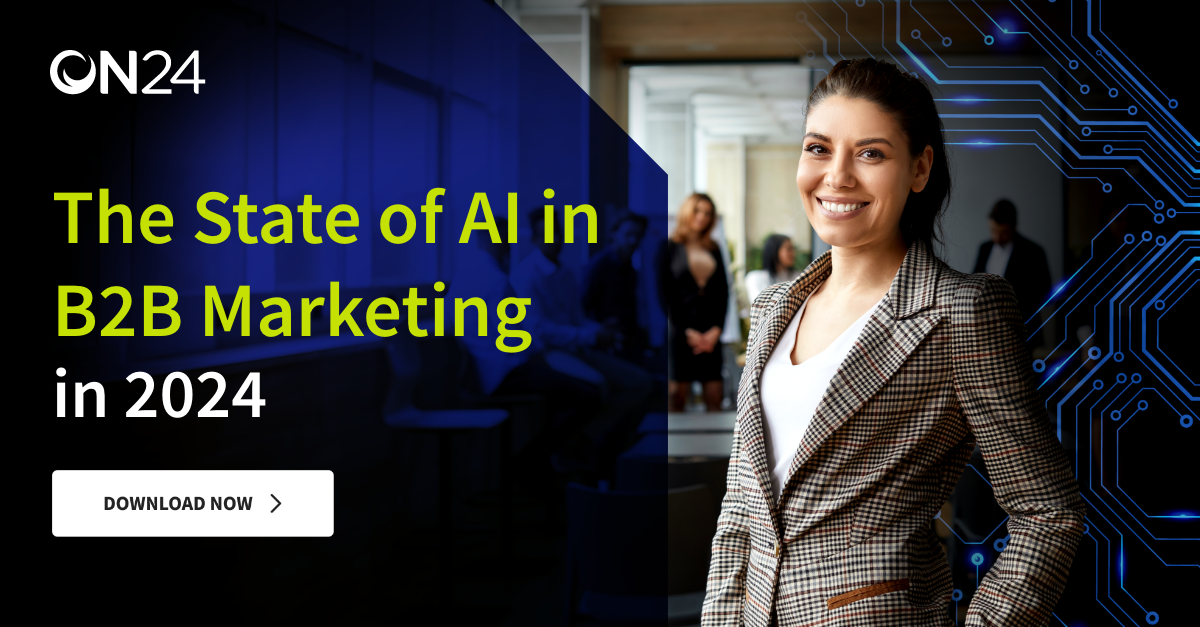Achieving Rapid ROI with AI: 10 Ideas to Try Out in Your B2B Marketing

Given that B2B marketers are always being asked to justify their spend, it is natural to question whether any investment of time or money into new technology will be worth it. Fortunately, the low barrier to entry means makes artificial intelligence easy for marketers to experiment with.
Here are 10 AI marketing ideas to try out in your B2B efforts:
1. Repurpose existing recorded webinars and events into written content
An average webinar can easily contain 10,000 words of spoken content and can be transcribed in minutes with AI. These transcripts can then be used as a base to create related content using AI. This content can be used to engage attendees after the event, drive on-demand views, and generate additional leads and pipeline through e-books and other assets.
2. Repurpose webinars into short-form, shareable video clips
Expand your reach by transforming the most engaging parts of your webinars into short, shareable video clips. This can also be valuable in engaging decision-makers who are short on time, helping to drive them through the purchasing journey.
3. Promote your most engaging assets with AI-powered analytics
AI makes it easy to identify the content that converts, but perhaps isn’t seen by the widest possible audience. Use the insights to find these gems and promote them to boost their visibility and marketing’s impact on pipeline
4. Boost conversion rates with AI-powered A/B testing
No matter the channel, sometimes the hardest part of optimizing conversion rates is to think of different variations to test. AI can quickly suggest a large number of options for you — and for channels that will choose a winner (e.g. A/B tests via email), you can benefit automatically from improved performance.
5. Engage buyers automatically through AI chatbots
The perfect time to reach out to a buyer is when they are already engaging with you — whether that’s on your website, during an on-demand webinar or when they are browsing a content hub.
AI chatbots enable you to seize this opportunity. Try using them to recommend content, present personalized offers, ask questions for buyer insights or even to book meetings for your sales reps.
6. Create new and personalized content for high-value buyers
The content with the highest value will be that which is relevant for your highest-value buyers. If there is a gap in content to serve their needs, use generative AI to quickly craft something meaningful — as well as to create personalized variations that can be tailored and targeted based on their attributes.
7. Produce company-specific content for interested accounts
Both your own first-party data and third-party solutions can identify which accounts are likely to be in market at any given time. To stand out from the competition, generative AI can be used to quickly create customized content based on their interests — allowing you to capture more high-value deals.
8. Create additional content for high-value target keywords and topics
Fresh and up-to-date content can be a powerful driver of traffic and conversions. Creating such content was not always possible given limited resources, but the efficiency provided by AI can help you to capture interest for competive search terms, as well as making sure you can offer something relevant for commercially important topics.
9.Improve booking rates with AI-generated sales outreach messaging
If your marketing-generated leads and accounts are failing to convert to sales meetings, use AI to refresh the content and messaging of your reps. Such messaging isn’t limited to email — try using AI for personalized call scripts, video messages, LinkedIn connection requests and follow-up messages that resonate with each individual recipient.
10. Create customer content based on their challenges and issues
It’s well-known that it is cheaper to retain a customer rather than to acquire one. Put AI to use by creating captivating content that serves customer needs. Examples include creating FAQs to solve problems and offer solutions, repurposing training and onboarding webinars into written content, or mining your CRM and support systems for pain points and challenges that AI-generated content can address.
